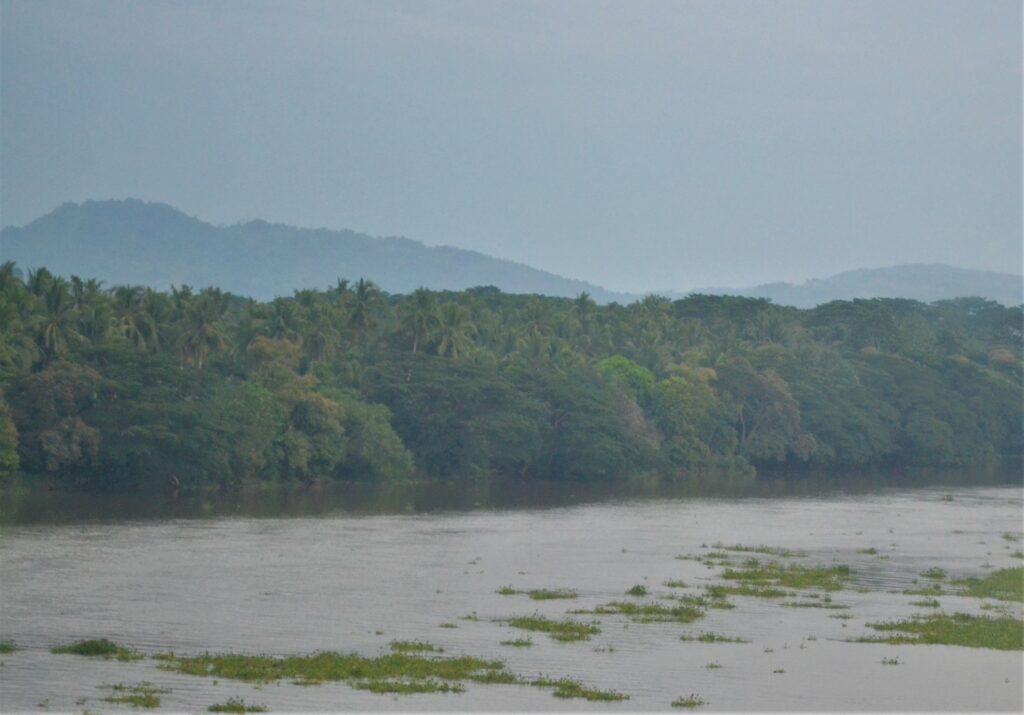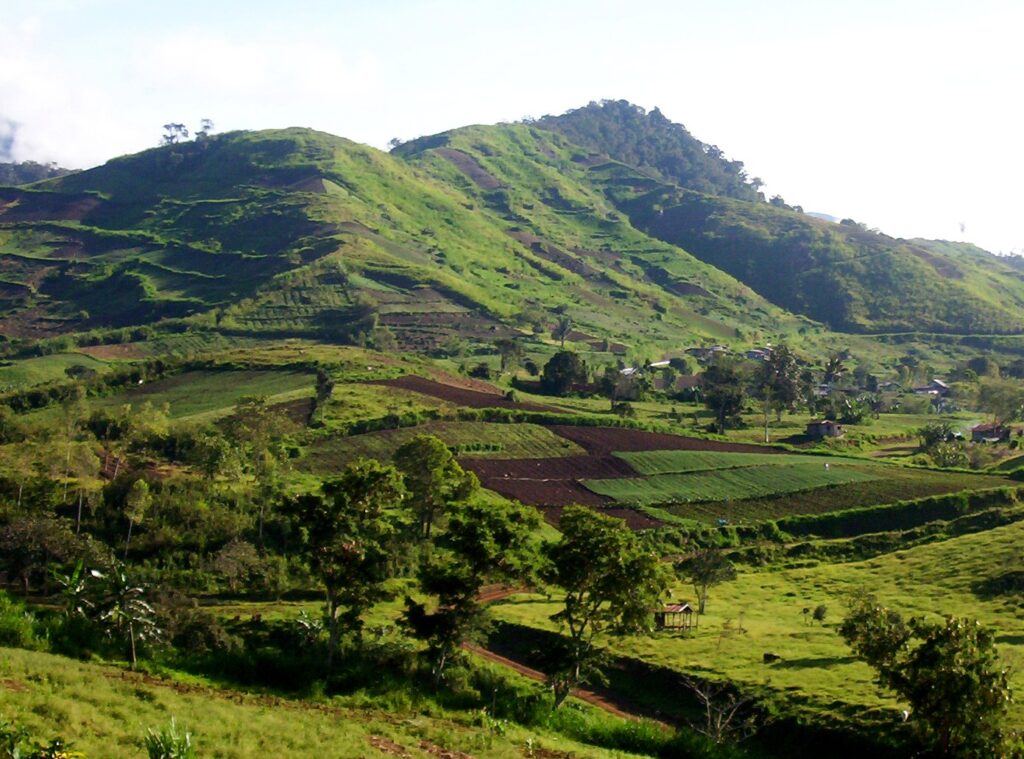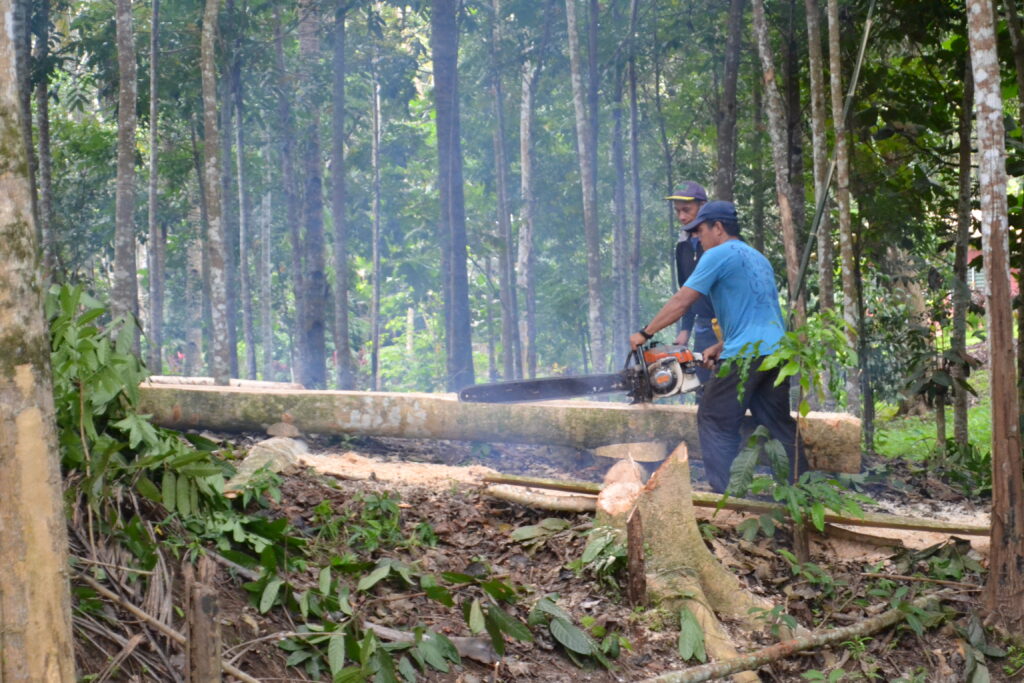Text and Photos by Henrylito D. Tacio
Trees are utilized in building houses, making bridges and furniture, and cooking foods. In some instances, the fruits provide food for the hungry.
But there’s more to trees than wood and food. From which most of the useful trees grow, Tropical forests are what Professor Norman Myers considers as “the finest celebration of nature that has ever graced the face of the planet.”
“Their biotic diversity is legendary,” says Prof. Myers, a British environmentalist specializing in biodiversity who has been a consultant to several United Nations agencies, the World Bank, and other organizations. “A single bush in Peru, for instance, may feature as many ant species as there are in the British Isles.”
In the Philippines, the Mount Makiling Forest Reserve in Los Baños, Laguna is described as “an exceptional diversity of woody plant species, totaling more than the entire number of woody species found in the United States.”
Perhaps, doctors and other health professionals should take a closer look at the forests since they provide medicines for sick people. “Nearly 90% of human diseases known to medical science can be treated with prescription drugs derived from nature,” notes Dr. Paul Torrence, an Emeritus Professor of Chemistry and Biochemistry at Northern Arizona University. “The benefits to humanity of nature-derived medicines are incalculable in terms of longevity, relief of suffering and increase in the quality of life.”
According to the Environmental Magazine, some 120 prescription drugs sold worldwide today are derived directly from rainforest plants. The U.S. National Cancer Institute (NCI) reported that more than two-thirds of all medicines found to have cancer-fighting properties come from rainforest plants.
Examples abound. “One of the biggest breakthroughs against cancer in recent decades has stemmed from the Madagascar periwinkle (Catharanthus roseus), the source of two potent drugs used against leukemia and Hodgkin’s disease,” Prof. Myers writes.

It has been reported that the ingredients obtained and synthesized from a now-extinct periwinkle plant have increased the chances of survival for children with leukemia from 20% to 80%. The NCI believes tropical rainforests may well contain “at least ten further plants with similar potential against cancer.”
There are also compounds derived from rainforest plants that are now used to treat malaria, heart disease, bronchitis, hypertension, rheumatism, diabetes, muscle tension, arthritis, glaucoma, dysentery, and tuberculosis, among other health problems.
“We cannot imagine a world without antibiotics such as penicillins, cephalosporins, doxycycline, or erythromycin, without pain relievers, without muscle relaxants, without oral contraceptives, without cancer drugs like Taxol, without blood pressure lowering drugs like lisonopril, without digoxin for heart failure, without local anesthetics, and without anticoagulants like coumarins for thrombosis,” Dr. Torrence points out.
People should be thankful for the wealth of tropical forests next time they visit a pharmacy. “There is one-in-four chance that our purchase will derive from tropical forest plants,” Prof. Myers says. “It may be an antibiotic, an analgesic, a diuretic, a laxative, a tranquilizer or even just cough drops, among many other products.”
Not too many know that the contraceptive pill was initially manufactured from a wild yam growing in Mexico’s forests. Among the latest pills comes courtesy of a forest plant of West Africa. There is also some hope that therapy to counter Acquired Immune Deficiency Syndrome (AIDS) lies with a plant in Queensland’s forests.
There has been a surge of interest in recent years in ethnobiology, ethnobotany, and other interdisciplinary fields of research that take traditional knowledge and culture as starting points in the search for new medicines.
“Folk medicine is the standard source of medical treatment for at least three-quarters of the world’s people; some analysts set the figure as high as 90%,” says a publication published by the UN Food and Agriculture Organization (FAO). In contrast, “Western” or technological medicine is readily available only to one person in four or five, worldwide.
Systems of folk — or alternative — medicine take many different forms, but nearly all are mainly based on plant extracts. India has more than 2,000 known medicinal plants, Malaysia around 1,000, while Brazil has at least 3,000.
Unfortunately, the tropical forests are fast disappearing. In fact, almost half of the world’s tropical rainforests have already been destroyed. “It is insanity to let this destruction continue,” deplores Prof. Myers. “Yet an area of rainforest the size of six football pitches is still being destroyed every minute of every day.”
The same thing is happening in the tropical forests of the Philippines. Once upon a time, the country was entirely covered by forest. Jose Ma. Lorenzo Tan, a noted environmentalist and wildlife photographer, wrote in an article that forest covered 70% of the Philippines in the 1900s. By the mid-1960s, only 13.5 million remained, of which barely 6.3 million hectares were considered a primary forest.
During the administration of President Ferdinand Marcos, forests were decimated at an astonishing rate of 300,000 hectares per year.
“As the timber boom gained momentum, the government was unable to supervise concessions effectively or enforce logging regulations,” wrote Robert Repetto, author of The Forest for the Trees? Government Policies and the Misuse of Forest Resources. “Links between timber companies and politicians further eroded government control.”
Towards the end of Marcos administration, only 7.2 million hectares remained of the country’s forest cover, of which bare 2.7 million hectares were reported virgin forests.
Today, we are paying for the sins of the past. As the Holy Bible states, “the wages of sin is death.”
Almost 25 years since the Catholic Church leaders warned against an ecological debacle in the country, the disappearance of forests remains. “Our forests are being denuded at the rate of 25 hectares per hour,” deplored Rep. Mark Villar of the Lone District of Las City.

Where have all our forests gone? “the Philippines is among the countries that are losing their forest cover fast, ranking fourth in the world’s top 10 most threatened forest hotspots,” deplored Marjorie Pamintuan, the spokesperson of Kalikasan People’s Network for the Environment. “If the deforestation rate of 157,400 hectares per year continues, the country’s remaining forest cover will be wiped out in less than 40 years. The area lost to deforestation every year is twice the land area of Metro Manila.”
The extensive loss of forest is catastrophic for a country with a population of more than 96 million. “Failure to protect our remaining forest would mean a great loss of the country’s rich repository of biodiversity of all time,” said Fulgencio Factoran when he was still the head of the Department of Environment and Natural Resources.
There are several solutions as there are several causes of the problem. “It is wrong to just portray the problem of forests as a problem with logging of natural forests as it’s a problem of competition for land use,” said the Bogor-based Centre for International Forestry Research (CIFOR). “It’s a much bigger problem than good or bad logging. The real long-term problems are outside the forestry sector.”
CIFOR shares these thoughts: “Increasing population puts pressure on agricultural production, which increases the demand for land and leads to forest depletion. Relaxing trade barriers also have an effect.
“Areas opened up by commercial logging are often then exploited by shifting agriculture (kaingin to Filipinos) leading to more devastation and mismanagement or over-exploitation of resources.”

Indeed, there are no fast rules in curbing deforestation. But data from the Forest Management Bureau of the Department of Environment and Natural Resources show that the government and the private sector’s combined reforestation efforts are not enough to arrest rapid deforestation. “Although the national government allocates funds for reforestation, projects have been largely dependent on foreign funding,” observed Pamintuan.
Even at the end of the world, so goes a saying, we need to plant trees. “A person without children would face a hopeless future; a country without trees is almost as helpless,” American President Theodore Roosevelt reminded.

